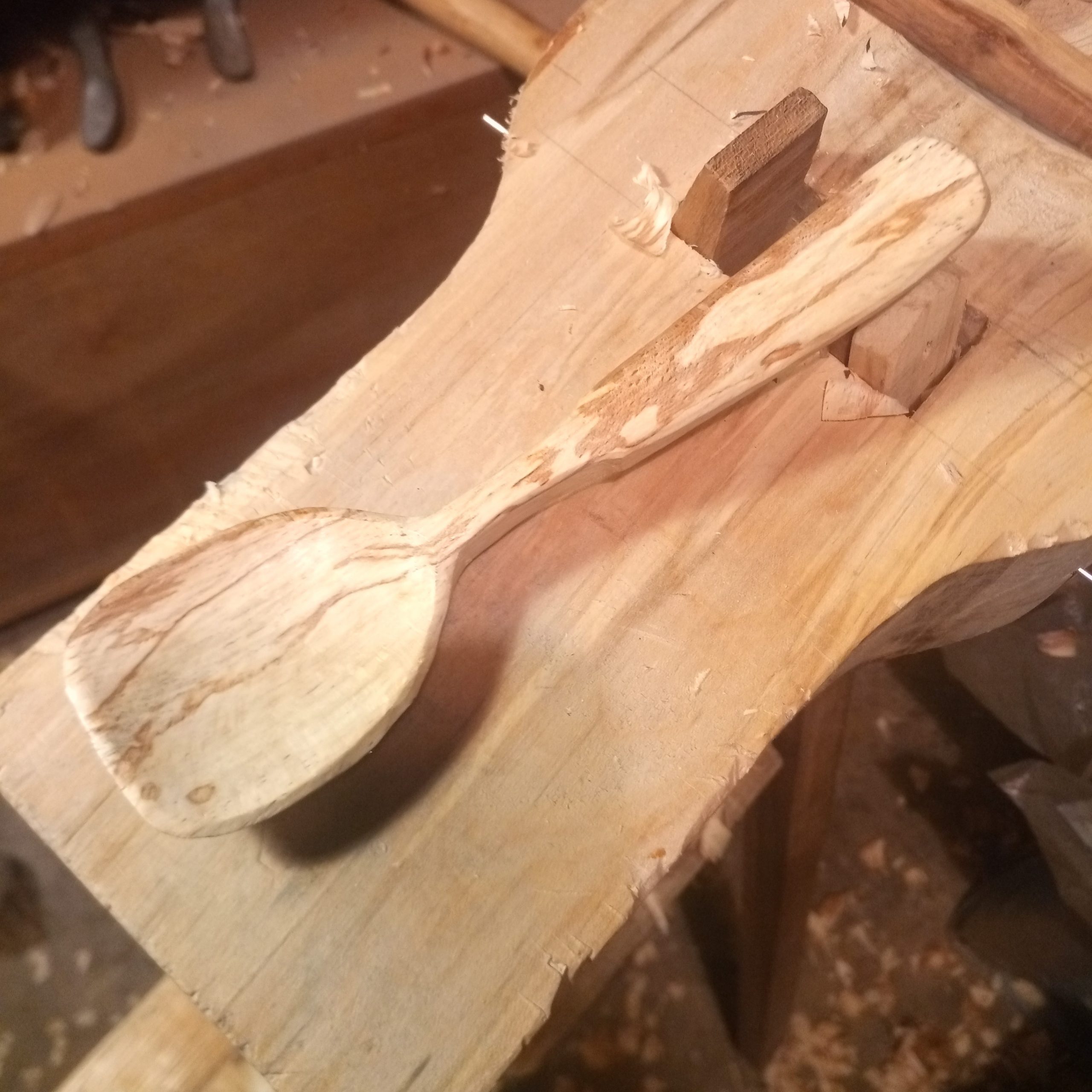What is Spalting?
Fungi are everywhere and are responsible for the breakdown of matter and the beginning of the rotting process. Sometimes sick trees are attacked by these fungi, but once trees or branches fall to the ground in the moist atmosphere of a UK winter, Fungi will not take more than a few months to attack the wood for nutrients and sugars. Some fungi bleach the wood. Others darken or colour it, and when they compete with each other will often put up a barrier to protect their resource. This appears as a dark line.
There are many books and videos on the subject. Some people even go to the trouble of impregnating their wood with the fungi they want, based on past experimentation, and grow their little creations in suitable environments to get the “right look” for woodturning and furniture.
It is a complex subject, but all we need to know really is it makes the wood pretty colours when you can find it. You never know what you have until the log is split open, so makes the initial axe work quite exciting when you think you have a spalted log, and Beech is one of my favourites.
A Bushcraft Spoon
Well, maybe I made this name up but was asked by a bushcrafter to design and make a spoon for him. I like getting into the woods and cooking over open fires, sometimes having an overnighter. So was not unfamiliar with the requirements and soon came up with my own design. In my mind, it needs to be an all-rounder, something you can cook food with and then use for eating when ready.
Some meals come in bags you just need to heat up then eat, so short handles will not work unless you want food over your knuckles. Pancakes and bacon butties are go-to`s for breakfast so flipping and frying as well as stirring things needs to be possible.
Spoon handles work better and are more comfortable with an upturn to nestle the thumb, all these considerations went into the mix and after a few experiments came up with my Bushcraft spoon. Of course, you don’t have to use it in the woods, works well in any kitchen as a couple of customers have found out.
Knife cuts Vs power carving and sanding
An integral part of all my spoons is the finish. I want them to stand out as being hand-carved and love the look of a spoon with shiny facets that a very sharp knife blade will leave behind. Every visible facet is a knife cut working with the grain and polishing the wood surface as it passes over it.
Sanding can look good initially, but the wood fibres have been torn out rather than cut, so once wet the fluffy fibres and debris left from the sanding will stand out from the wood. This may be acceptable on a cooking spoon but when put into your mouth will feel like a wet hairy rodent on a stick, not a pleasant experience. Licking the wooden spoon used to mix a cake soon teaches up as kids never to eat with one, but this only applies to mass-produced sanded spoons. Carved wooden spoons were used for centuries until stainless steel became cheap and available. It’s a great shame they have now become so unpopular.
So lets go through the process, just how many cuts are there?
- 2 end cuts with a saw, then 3 partial cuts to speed up the axing process
- Around 60 axe blows to rough out the shape
- Handle outline roughing with a knife 58 cuts
- Scallop shoulders 24 cuts
- Bowl outline 125 cuts
- Top face 74 cuts
- Back of spoon 106 cuts
- bit of general tidying 21 cuts
- Roughing bowl of spoon 170 cuts
- Smoothing out bowl 95
- Shaping and chamfering top 93 cuts
- Shaping bottom and back of the bowl 281 cuts **
- Chamfering back 32 cuts
- Final fettling 22 cuts
- Makers mark 9 cuts
** that’s a lot, could have been more aggressive with the axe here
Total of 1175 cuts using a saw, axe or knife.
I have not counted it up before but shows the effort I put into my spoons, and just what a handcrafted bargain they are. They are not just a little piece of sculpture but also functional. I am told that once you use one for a few days there is no going back. It becomes your go-to favourite spoon, regardless of it being for bushcraft, cooking, serving or just to eat with.
About the author
I am on Instagram @Mark.A.Cornish if you want to see some of my spoons that do
work out, and some are for sale in my local coffee shop, Snoopers Bazaar.
Would you like to talk about your passion?
We welcome submissions from anyone that is passionate about the countryside, seasons, farming, food, rural activities or anything of that nature. Please feel free to Contact us.
